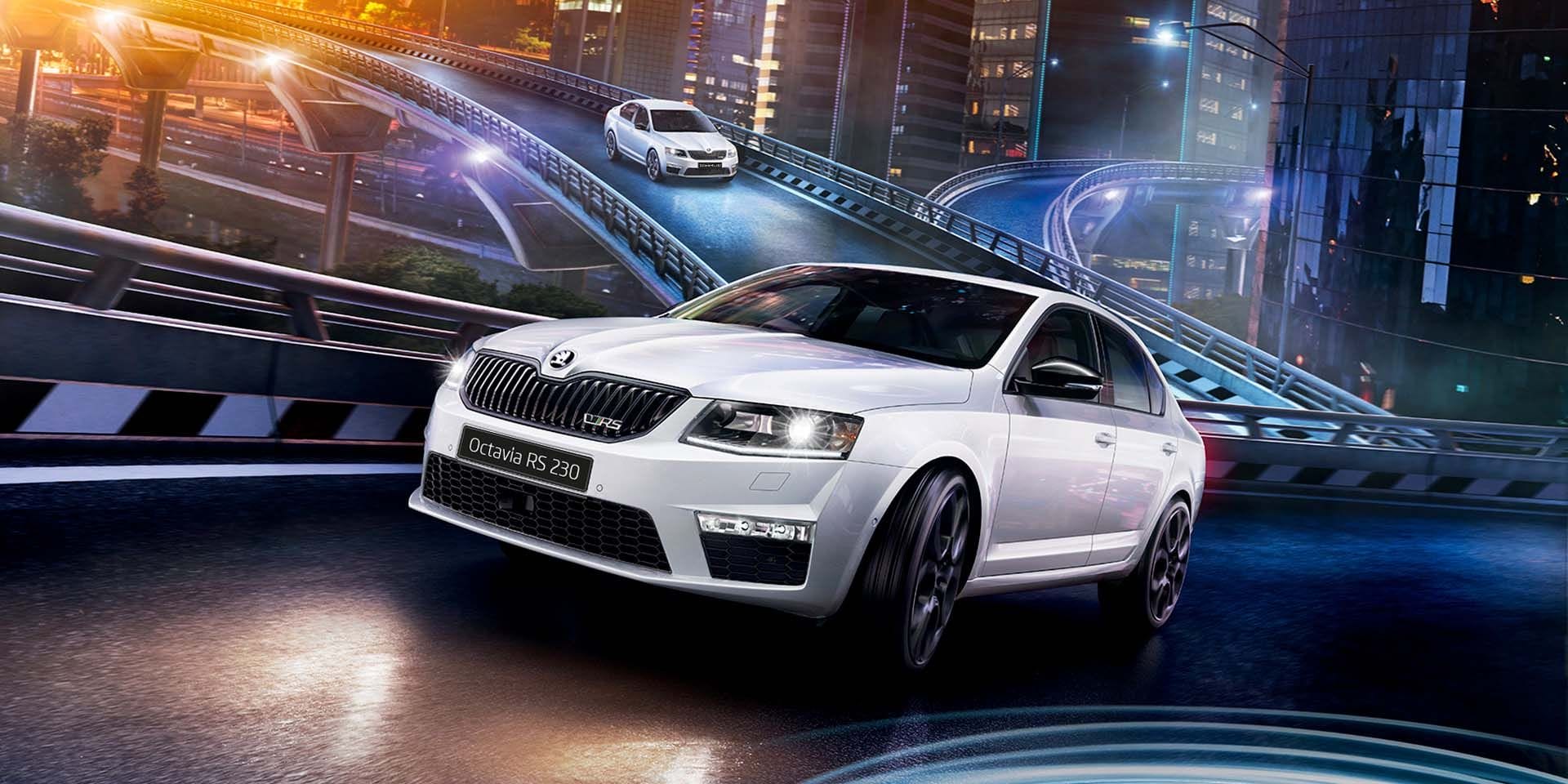If you’re on a budget and have a family, there are a couple of options in the showroom you may want to think about.
There are two great options if you’re thinking about a sporty compact wagon: the Renault Megane GT and the Skoda Octavia RS.
How Do the Skoda Octavia Vs Renault Megane Compare Against Each Other?
| Skoda Octavia RS Wagon | Renault Megane GT Wagon |
| Engine | |
| 1.4 litre four cylinder turbo petrol | 1.6 litre four cylinder turbo petrol |
| Power and Torque | |
| 180kW/370Nm | 205kW/280Nm |
| Fuel Consumption | |
| 6.8/100km | 6.0L/100km |
| Transmission | |
| 7 speed auto direct shift | 7 speed dual-clutch auto |
| Drive Type | |
| Front wheel drive | Front wheel drive |
| Boot space | |
| 640L, 1700L with rear seats down | 580L, 1504L with rear seats down |
Comparison based on Design
The new Megane has a muscular look, with bulging wheel arches on all four corners, which cover 19-inch alloy wheels and tracks which have been widened by 60mm at the front and 45mm at the rear.
The Sport model of the Octavia is accentuated by black pinstripes. This model has a black gloss grille and is more “spidery” in appearance than its Megane counterpart.
Engine Comparison
The Renault is equipped with a turbo 1.6 litre engine seen on the Clio RS. The four-cylinder forced induction offers a power boost from the standard configuration on the Clio that delivers an impressive 7.4 second zero to 100 km/hr. This power has not compromised fuel economy, with official figures of 6.0 litres per 100 km.
The Skoda Octavia RS didn’t need any updates or tuning to offer fantastic performance. The 2.0 litre unit is paired with a six speed DSG to deliver 169 kW of power and a zero to 100km/hr rate of 7.0 seconds. Despite this, the fuel economy is only slightly higher than the Renault, which means it offers frugal consumption and plenty of power.
Practicality
The Octavia RS Wagon is slightly longer than the Megane GT Wagon, which is evident in the larger boot space. While it is only 8 litres larger at 588 litres, when you drop the rear seats it increases to a mammoth 1718 litres that overshadows the 1504 litres offered with the Renault. The boot design on the Octavia is also smarter. There are additional touches such as storage nets, double sided boot mat, fold out hooks for shopping bags and a removable torch/boot light.
Price
Both the Megane GT and Octavia RS sit in the upper-middle area of their respective ranges. The Renault Megane GT is the only model to squeeze its RRP under the $40k mark, and only just with pricing from $39,990 after a $500 increase in August 2017. That’s a relatively big jump over its $36,990 predecessor, the GT220 Sport Wagon, though that model was six-speed manual only whereas the GT is, conversely, an auto or nothing.
Features
The Megane R.S. features an 8.7-inch multimedia system capable of displaying performance analytics including acceleration, braking, and wheel angle. Apple CarPlay and Android auto smartphone connectivity is also now built in, as is GPS sat nav.
It also gains R.S. badging, sport seats, a perforated leather steering wheel and shifter, dual-zone climate control, and heated folding side mirrors.
The base model Octavia is also well equipped, with niceties such as an 8.0-inch touchscreen media system with Apple CarPlay and Android Auto, USB and Bluetooth connectivity, dual-zone climate control, adaptive cruise control, a cooled glovebox, and an auto-dimming rear-view mirror.
The wagon model has silver roof rails, but sadly, there’s a chrome strip at the nose end, and this model comes with halogen headlights but the tail-lights are LED units. Standard-spec Octavia’s come with 17-inch alloy wheels, and all Octavia’s get front fog lights.
Fuel consumption
Renault claims an eight per cent fuel consumption improvement over the previous generation R.S., with 7.4L/100km for the manual and 7.5 for the EDC.
With such a specific output, top-shelf 98 RON unleaded is needed, and the 50-litre fuel tank suggests a theoretical range between fills of at least 666km.
The Skoda Octavia has 5.2 litres per 100 kilometres for the DSG hatch and wagon, while the 110TSI manual hatch uses 5.4L/100km and the 110TSI manual wagon claims 5.5L/100km.
The Octavia requires 95RON premium unleaded fuel at a minimum.
Performance (and Dynamics)
The GT forced-induction four-cylinder can do 151kW and 280Nm, which is aided by a fast-shifting seven-speed dual-clutch auto. The GT is two-tenths quicker in the sprint to 100km/h with a quoted 7.4 seconds.
The GT wagon delivers excellent drivability and sounds refined, even when revved hard. And official fuel consumption of 6.0 litres per 100km is not only relatively frugal but surprisingly better than the 6.2L/100km of the smaller-engine (1.2L turbo) Meganne wagons.
The 1.6-litre turbo is never exciting, and throttle response can be shoddy even with the car in its RS Drive mode. The gearbox calibration is also flawed, as it ignores manual mode by changing up prematurely and tends to refuse a paddle-shifted request from third to second gear.
The MY17 Skoda Octavia RS is immediately better in this respect. It has very small paddles but they’re attached to the wheel so are permanently in proximity to your fingertips.
The six-speed DSG is more obedient to the driver’s commands on downshifts, holds revs to redline (and to the limiter if desired), and its shifts are a quicker experience.
Making the most of its extra capacity, the RS’s 2.0-litre – adopted from the Golf GTI 7.5 (and former Octavia RS230) offers a lot more power (169kW at 6200rpm) and significantly more torque (350Nm).
Generated from 1500rpm (to 4600rpm) compared to the 2400rpm for the GT’s maximum pulling grunt, the RS’s engine offers an even greater flexibility and in-gear performance. A 7.0-second 0-100km/h time also gives it a comfortable win.
With RS mode engaged, throttle response is superior and there’s more character to the Skoda Octavia’s engine and exhaust sounds – even if artificially enhanced by a sound generator. There’s a satisfying beat on light and medium throttle, which progresses into an urgent snarl when flat out.
Summary
With compact sporty wagon options limited, it’s a relief Renault and Skoda have both served up strong offerings.
The taut and subtly muscular Megane wagon is our preferred option. It has been a big tick for Renault’s design team with a mix of refinement and sportiness increases its appeal.







